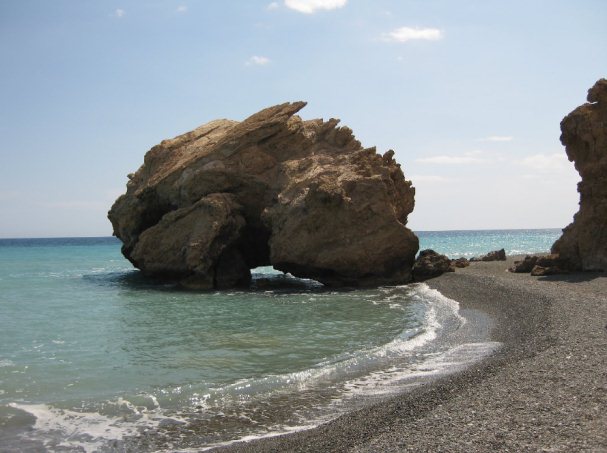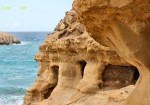Location
Tertsa beach lies in the homonymous small village, 80km south east of Heraklion, 51km south west of Agios Nikolaos and 21km west of Ierapetra.
The village of Tertsa has managed to remain unaffected by the invasion of mass tourism and is among the few places which retain their Cretan authenticity.
It is primarily a place for those seeking for peaceful holidays.
Characteristics
| Access By: Car | Beach Type: Coarse sand |
| Depth: Normal | Temperature: Cool |
| Organised: Little | Windy: No |
| Natural Shade: Yes | Crowded: No |
| Family-friendly: Yes | Nudism-friendly: Yes* |
Facilities
Few umbrellas, sunbeds, tavernas, accommodation options and a mini market.
Notes
* Tertsa is a top destination for naturists.
On the western part of the beach, there is a stunning rock and beyond it you will find another beautiful and isolated beach called Psaroharako. There is a short dirt road connecting Psaroharako and the village.
How to get to Tertsa
Tertsa is accessible only by rented or private cars and motorbikes.
If you choose to drive from Heraklion, take the provincial road Knossou-Charakas and drive past the villages of Arkalochori, Ano Viannos and Sikologos.
Alternatively you can take a public bus up to the villages of Viannos, Arvi or Sikologos which is 10km north of Tertsa.
If you drive from Agios Nikolaos or Ierapetra you will reach Tertsa via the villages of Mirtos and Vatos.
For the remaining 3km after Vatos, careful driving is suggested.
Alternatively you can take a public bus up from Ierapetra to Mirtos.
Tertsa is 6km away.
Photo by: ik510






